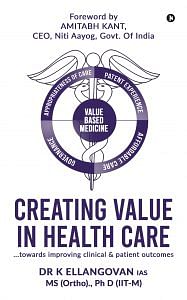Hospitals have existed in India from the ancient times. They were meant for poor and handicapped. Some of the major hospitals were built by King Ashoka (273–232 BC) during his times. It was essentially based on the Vedic texts that was available at that time. According to some of the Arabian and European travelers, around AD 600 period, the study of medicine in India was in its bloom. Thereafter, during the 10th Century AD, foreign invaders brought their own physicians called Hakims, trained in Unani system of Medicine. The modern medicine as it is now called, the Allopathic system of medicine came into practice in the 16th century with the arrival of European missionaries. Lord Buddha himself took very keen interest in supporting the science of medicine. During the course of his travel for propagating Buddhism, Buddha created Buddhist Viharas (monasteries) in different places, and in all the Viharas, care of the sick and medical education was given special attention. Later, Emperor Akbar (1555–1605), during his period, encouraged the amalgamation of the Unani and Ayurvedic systems. The most significant achievement was the translation of medical texts in Arabic, then into Persian and later into Urdu. It was during the British rule that there was progress in the construction of large number of hospitals in British ruled India and with that, medical training was started in India in the 19th century AD. Hospitals became an integrated part of church under the Portuguese administration. Medicine was treated as a religious practice, and all missionaries like nuns and monks used to be trained to take care of the sick. The system of modern medicine began after the Portuguese founded the Royal Hospital in Goa between 1510 and 1515, and later the Jesuits introduced basic general medical training programme at the hospital. In 1842 this was converted into school of medicine and surgery.
The first medical school in India was started in Calcutta, followed by Madras in 1846. Along with the spread of British rule over the country, local government encouraged establishment of dispensaries at subdivision and district level.
In the year 1943, Government of India appointed a committee called the Health Survey and Development Committee headed by Sir Joseph Bhore to study and recommend changes in the health care system for the post independent India. This is the only authentic record depicting hospital development and health care system in pre-independence India. The committee submitted its report in the year 1946. The report recommended sweeping reforms in healthcare and advocated the three tier system of public healthcare institutions, that are still in existence today. Bhore’s committee recommended that, health care should be made available to all the citizens and at free of cost basis. It also stipulated targets to achieve on doctor-population ratio and population- bed ratios. In course of time, when the government found that recommendations of Bhore Committee (1946) were too ambitious, it set up The Health Survey and Planning Committee, popularly known as Mudaliar Committee, in 1959. This Committee was set up with the following aims: This committee submitted its report in 1961.
Although the proposals of the Mudaliar Committee were modest as compared to those of the Bhore but owing to the paucity of resources the results achieved were nowhere near the prescribed targets. This led the Ministry of Health and Family Planning, Government of India to set up the study group on hospitals in August 1966. The study group was required to take into consideration the findings of previous committees and suggest measures to strengthen areas in the health care system. Some of the terms were: to suggest the future pattern of hospital settings at regional, district and peripheral areas; the specialties that need to be incorporated; to suggest ways to integrate the peripheral units with the major hospitals; appropriate staffing levels, availability of pharmacies in the hospitals, etc.
The committee recommended minimum number of beds in district hospitals to 200 and also suggested the proportion of beds in each specialties in such hospitals. The Committee recommended support to Voluntary Health Organizations. The Committee also suggested establishing 5080 Primary Health Centres, and specific recommendations were made on the pattern of staffing of various services in hospitals.
Also Read: Jugaad can’t fix India’s broken healthcare system. People need medical insurance
Evolution of Healthcare System in India
The framework for establishing and running the healthcare organizations is provided by the successive five-year plans and health policy issued in the year 1983 and 2002. Soon after the independence, government of India retained the same pattern of responsibilities between the union and state government which was in existence prior to Independence. Therefore, health as a subject is primarily vested with the States and the role of union government was limited to medical education, medical research, and control of infectious diseases. There are three distinct periods in the history of evolution of healthcare organizations in India.
During the phase I, which lasted between the year 1947 and 1983, the driving principle of the health policy was that none should be denied care for want of ability to pay and that it was the State’s responsibility to provide healthcare to the people. The major thrust area was to contain communicable diseases like plague, cholera, and smallpox. Besides, high maternal and child mortality forced the government to focus on family planning services and improving reproductive health at the cost of enhancing public health standards. The second phase marked the launching of the first health policy in the year 1983 which was in a way, a sequel to the Alma Ata Declaration in 1978. The ‘health policy 1983’ articulated the need to encourage private sector to tackle issues in the public health, while at the same time expanding the access to publicly funded primary care organizations. Along with these initiatives several National Health Programmes (NHP) were launched with the assistance of the World Bank and other donor agencies mainly to tackle vector borne diseases. Absence of a surveillance mechanism to understand the changing morbidity profile led to inadequate planning for development of human resources for the sector. The third phase started with a need to declare another health policy in the year 2000, when the 52nd National Sample Survey indicated a reduction in the percentage of population seeking services from the publicly funded organizations during the period 1986-96.
Also Read: Private sector filled the gap in health that govt created. Don’t ask for the moral price
On an average, the utilization of out-patient care reduced from 26% to 19% along with a decrease in access to free care from 19% to 10% and an increase in the number of persons not seeking care due to financial incapacity. Therefore the ‘Health Policy 2002’ essentially focused on three thrust areas: promote private investments in public health, liberalize the Insurance sector to provide avenues for health financing and finally, expand the state’s role from being only the provider to the financier of health services, through buying health insurance cover to its citizens. As a result, the need to improve public investment from the current level of 0.9% of the GDP to about 2% to 3% of the GDP, increase the utilization of primary care facilities from less than 19% to over 75%, besides reducing the MMR & IMR, eliminate leprosy, reduce deaths due to malaria and TB by about 50% was reiterated. After the launch of the policy in 2002, after two years in 2004 when it was reviewed, the situation remained more or less the same as it prevailed prior to 2002. Therefore, Government of India formulated a comprehensive healthcare programme titled, “National Rural Health Mission” (NRHM) and launched it in the year 2005. In line with the policy framework, the NRHM, often termed the ‘flagship programme’ of Ministry of Health and Family Welfare has stated objectives such as: to provide accessible, affordable, and equitable health care services for people living in rural areas of the country with focus on under-served population and marginalized groups. The NRHM has a heavy rural focus in assisting the primary care organizations to control communicable diseases and maternal and child health programmes. A review on the performance of the NRHM showed early signs of improvement of health indices like the IMR, MMR and Total Fertility Rates (TFR) in the erstwhile underperforming states.
 This excerpt from ‘Creating Value in Health Care’ by Dr K Ellangovan has been published with permission from Notion Press.
This excerpt from ‘Creating Value in Health Care’ by Dr K Ellangovan has been published with permission from Notion Press.



